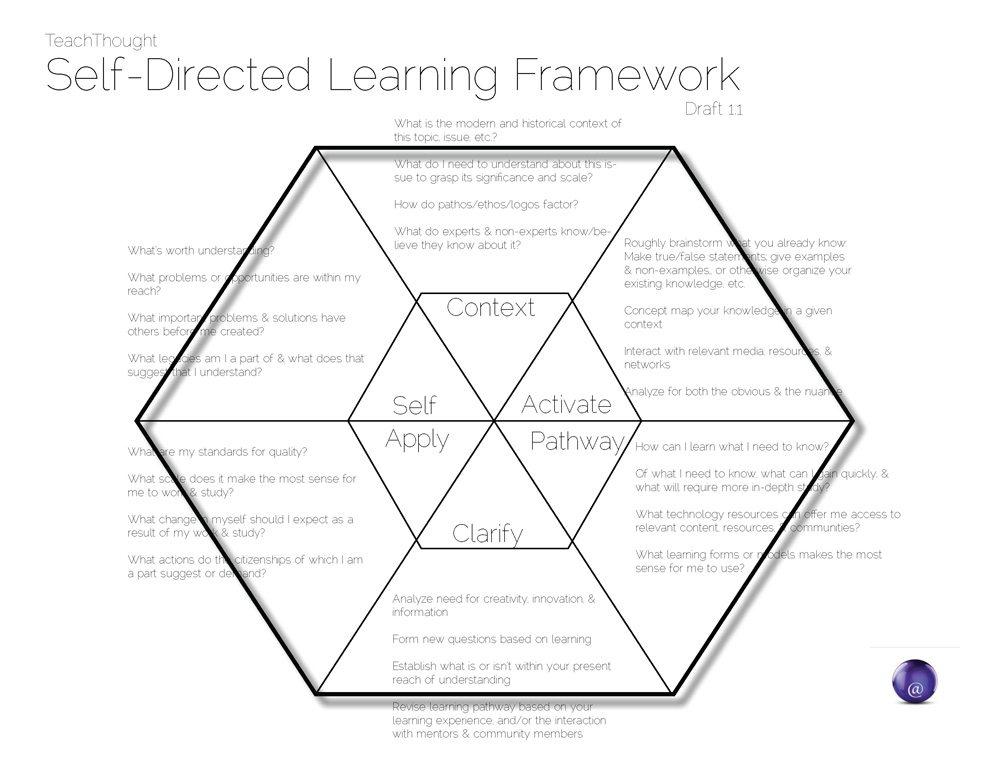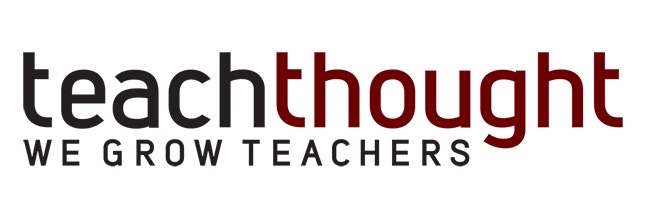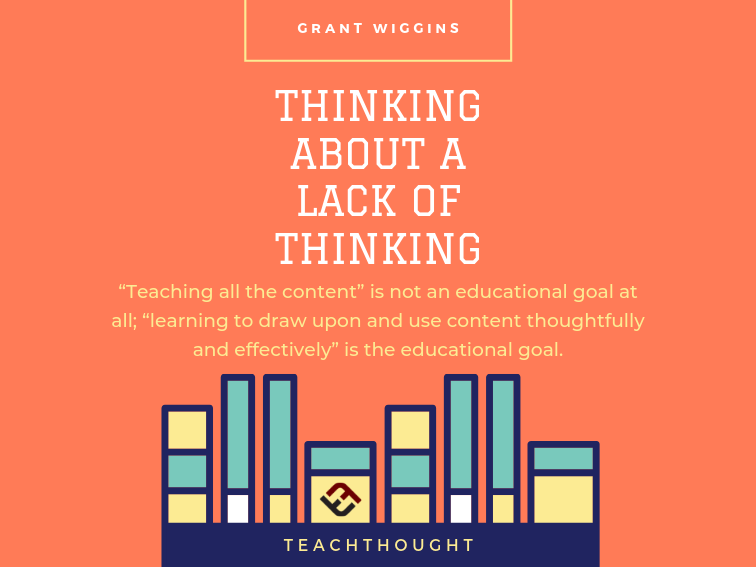
A Self-Directed Learning Model For 21st Century Learners
byTerry Heick
The above is the latest draft of our self-directed learning framework, version 1.1.
It is based, in spirit, on ourInside-Out School: A 21st Century Learning Model. It is intended to function as a guide for students–likely with the support and facilitation of teachers, parents, and mentors–to help students become expert learners.
The goal of the model isn’t content knowledge (though it should produce that), but rather something closer to wisdom–learning how to learn, understanding what’s worth understanding, and perhaps most importantly, analyzing the purpose of learning (e.g., personal and social change). It also encourages the student to examine the relationship between study and work–an authentic ‘need to know’ with important abstractions like citizenship and legacy.
It is therefore built around the central concept of self-knowledge–better understanding one’s self and using work and study to inform one’s interactions with the world. It sounds very idealistic but that’s part of the reason it exists–to offer an alternative to standards and content-focused and institutionally-centered ‘delivery’ of information.
Application:Teachers and learners in grades 6-12+
The Context Of This Model
The theory here is that the 21st-century is characterized by access, networks, digital media, and connectivity, which immediately dates old learning models and focuses.
In a progressive learning environment, students should constantly be generating original ideas from multiple sources of information–and be doing so guided by teachers, mentors and communities, all in pursuit of self-knowledge and self-created meaning and creativity.
Coming Updates
We’ll be creating an updated version soon as we put this version into practice with students. (Update: we still need to do this!) Collaboration, creativity, and existing exemplar models probably deserve a role. As does some kind of support to help students see things critically (critical thinking).
We’ll also take a look at making the font bigger, and maybe expanding this to two pages and offering it as a pdf for download. And add some color to make it easier to grasp at first glance.
TeachThought Self-Directed Learning FrameworkDraft 1.1
1.从自我认知开始
What’s worth understanding?
What problems or opportunities are within my reach?
在我创建之前,其他人有哪些重要的问题和解决方案?
What legacies am I a part of & what does that suggest that I understand?
2. Analyze Context
What is the modern and historical context of this topic, issue, etc.?
What do I need to understand about this issue to grasp its significance and scale?
How do pathos/ethos/logos factor? What patterns are apparent?
What do experts & non-experts know/believe they know about it?
3. Activate Existing Knowledge
Roughly brainstorm what you already know: Make true/false statements; give examples & non-examples, or otherwise organize your existing knowledge in some useful or elegant way
Concept map your knowledge in a given context
Interact with relevant media, resources, & networks
分析的obvious & the nuance; the implicit and explicit
4. Design Learning Pathway
How can I learn what I need to know?
Of what I need to know, what can I gain quickly, & what will require more in-depth study?
What technology resources can offer me access to relevant content, resources, & communities?
What learning forms or models makes the most sense for me to use?
5. Clarify Knowledge
Analyze need for creativity, innovation, & information
Form new questions based on learning
Establish what is or isn’t within your present reach of understanding
Revise future learning pathway based on your learning experience and/or the interaction with mentors & community members
6. Apply Understanding
What are my standards for quality?
What scale does it make the most sense for me to work & study?
What change in myself should I expect as a result of my work & study?
What related actions do the citizenships of which I am a part suggest or demand?
A Self-Directed Learning Model For Critical Literacy


